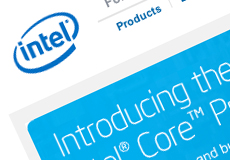By
Meghan CoyleOctober 2, 2014
Microsoft is skipping from Windows 8 to a Windows 10 operating system, expected to launch in the middle of next year. The new version, which was unveiled earlier this week, is intended to work across many different devices, from those connected via the “Internet of Things” to touchscreen phones, tablets and laptops. Windows 10 also features a newly redesigned Start Menu, which combines the tile design of Windows 8 with the traditional list design in older versions of Windows. Continue reading Microsoft to Introduce Redesigned Start Menu for Windows 10
By
Meghan CoyleSeptember 8, 2014
Google is competing with fellow tech giants Microsoft and Amazon to offer businesses the best options for their employees, from laptops to software to cloud services. The company’s Google Drive for Work is designed to help co-workers share files, even if they were created in a Microsoft or Lotus program. Also, the company’s new pitch to workplaces has featured its cloud services, which provides computing power, storage, application storage, and mobile support for businesses’ online presence. Continue reading Google For Work: Software, Cloud Services Target Enterprise
By
Meghan CoyleAugust 11, 2014
Last week, Yahoo joined Google and Microsoft in the effort to bring more privacy to users of their popular email services. The 110 million unique Yahoo email users will have the option to turn on an encrypted messaging feature. The feature relies on PGP encryption, which stores each user’s encryption key on their personal laptops and devices. Google also announced that encrypted websites will fare better in their search results due to a new feature in its ranking algorithm. Continue reading Tech Giants Tighten Security on Emails with Encryption Option
By
Meghan CoyleJuly 28, 2014
Unit sales of the best-selling tablet, Apple’s iPad, fell again for the second straight quarter, leaving some industry analysts wondering whether the tablet can survive in a world of bigger smartphones and smaller laptops. Microsoft and Samsung are also both losing money on their tablet devices, but cheaper Android tablets produced by smaller companies may be taking away some of the tech giants’ business. Still, many consumers do not see tablets as a must-have gadget. Continue reading The Future of Tablets May Be Uncertain: iPad Sales Fall Again
By
Marlena HallerJuly 18, 2014
DirecTV announced that it will offer its NFL Sunday Ticket to certain consumers who do not have a satellite subscription. Sports fans can register via NFLSundayTicket.TV to access streaming of live games on laptops, smartphones, tablets or game consoles. To qualify, viewers must live in an apartment building where DirecTV is not available, attend one of the universities included in DirecTV’s list, or live in metropolitan New York, San Francisco or Philadelphia. Continue reading DirecTV Introduces NFL Sunday Ticket Free of TV Subscription
By
Rob ScottJuly 16, 2014
Facebook and Nielsen are joining forces as part of an ambitious campaign to better measure how consumers are using their mobile devices for accessing entertainment media. As part of the mobile ratings Nielsen plans to introduce this fall, Facebook will scan its databases for the age and gender of its users who watch a TV show on their phone or tablet. The data will be shared with Nielsen and ultimately help networks and advertisers learn more about the viewing habits of consumers. Continue reading Nielsen Teams Up with Facebook to Measure Mobile TV Viewing
By
emeadowsMarch 22, 2013
HP Labs has developed a new kind of three-dimensional display that can play hologram-like videos without requiring moving parts or glasses. Videos hover above the screen as viewers walk around them and experience an image or video from up to 200 viewpoints, essentially simulating the experience of moving around an actual physical object. The LCD-based approach could be used by phones and tablets to produce holograms. Continue reading New 3D System Could Help Mobile Devices Create Holograms

